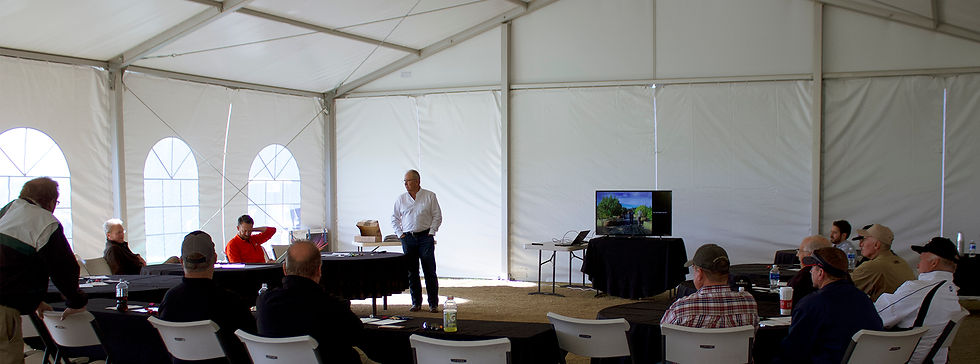Taking the Guesswork Out of Turf Transitions in Arizona
Paving the Road to a Great Transition
Our clients tell us their transitions are smoother than they ever could have imagined. Even in agriculture and nurseries, the signs of heat stress have dissipated, growth and vitality continue while using less water and managing pH values at 7.0. We're producing some of the highest quality turf, striped Bermuda fairways in the summer on 1 1/2 inches of dense clay and laid on top of granite rock. The same fairway carrying 660 ppm of sodium at pH 7.81.
Three of the many courses we treat in the southwest are are giving us great feedback.
Papago Golf Course was our first course in Arizona and has been using the WaterSOLV program for just under 2 years. Wigwam Resort has been on the WaterSOLV program for 8 months, AZ Country Club for 4 months, Westbrook Village 9 months. They are all seeing results they have shared with us.
"I can see it in the vitality of the turf and the feel in the soil and in 4 months I've saved $4,000 in fertilizer - More for less"

"I may go all summer long with just one shot of nutrition"
"I've never seen our turf respond to nutrition so fast"
"From snail control in the HOA emitters to the best turf and now the best transition we've experienced on both courses."

"We thought if half what the product was reported to do worked, it would be worth it. All of what was presented came true, even the iron stains on the light poles and concrete walls have dissipated."
The WaterSOLV program creates a clean pH reduction acidity utilizing the same acid used in treating potable water, some glycolates (that are commonly used in wetting agents and surfactants under a variety of names and that operates like sequestering and wetting agents to increase the solubility of calcium and magnesium in water.
WaterSOLV combines these two ingredients along with other proprietary ingredients to create a chemical reaction where when water dries, scale does not form. Everything stays ionic, and therefore a readily available nutrient that is highly suitable to flow with water and be taken up by the plants.

We finally figured out why conventional acid demand increases every year: salt crystals formed by strong acids do not dissolve with strong acids (cited UC Davis). In turn the buildup of calcium sulfate by sulfuric, N-pHuric and or sulfur burners, eventually lead to force feeding gypsum, a desiccant. Micro-crystals form as plants get dehydrated which block flow and retain heat. In turn we add more water, more salts, and with sufficient levels of sulfur and bacteria we convert the soil to the anaerobic condition often referred to as black layer.
There is more going on with this chemistry . . . stabilizing the electron on sodium, suppressing the environment conducive to black matter and continuous chemical aerification. Additionally, displacing carbonate so that minerals and nutrients can remain available, and not evaporate to dryness and crystallize. Hard water and hard soil are now beneficial.
Many bad spots we have done soil testing on were loaded with saturated and unavailable nutrients, surfactants and by-products of wetting agents. Glycolic acid and calcium make soap.
While we are making water wetter and sequestering salts, the key is that when the water evaporates, and the chemically modified salts evaporate to dryness, they don't form insoluble crystals. You can see this demonstrated in different conditions at different courses; one course, one 75 ppm treatment, another course 6 ppm over 6 months, and another course 6 ppm over 100 days. We continue to see soil samples pulled at 6, 12, 16 inches deep with ease in ground that was previously not even penetrable to an inch.

And, if you have shells in your lines, we can convert shells to available calcium, putting the calcium back to where it came from - the water.
Getting started with the program, use cost in the Southwest involves a chemigation system, about 550 gallons of Curative and 55 gallons of BC. It's probable the savings in harvesting existing water and soil hardness and nutrients in the soil, along with reduced activity in problem solving soil conditions will offset the program cost near 70% the first year.
For more information, contact your local Wilbur-Ellis or Simplot Partners Representative or contact us at (888) 788-5807 - info@hctllc.com


















